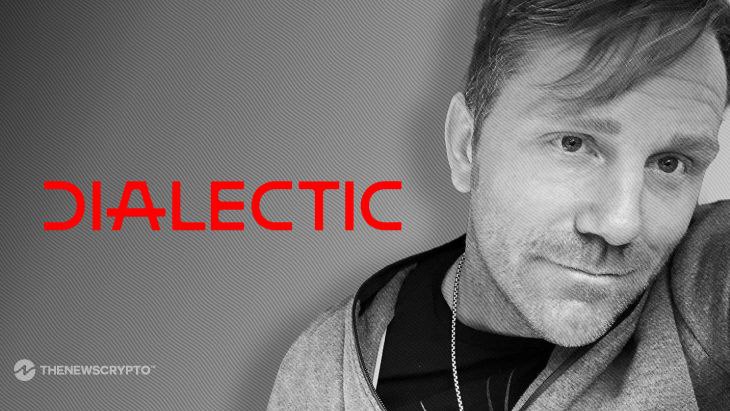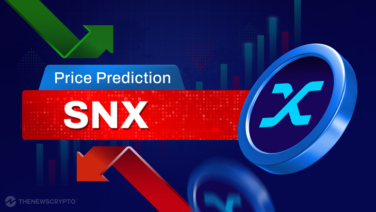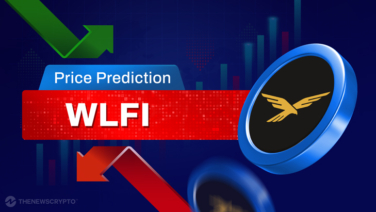From AI and Crypto Art to Collaborative Entrepreneurship: The Evolution of Crypto Investments with Dialectic’s Ryan Zurrer
In the fascinating realm where blockchain technology and art converge, Dialectic, an investment fund with a unique approach, is making waves. At the forefront of this venture is Ryan Zurrer, a visionary figure with a deep understanding of the crypto movement. As an entrepreneur and art enthusiast, Zurrer is exploring the transformative power of blockchain in cultural investments.
Zurrer has dedicated his expertise to generating exceptional returns for stakeholders in token-enabled decentralized consensus networks leveraging blockchain technology. With an impressive background in renewable energy, Zurrer’s journey into the world of blockchain began in late 2012 when he discovered Bitcoin, igniting a deep passion for the Ethereum ecosystem and blockchain technology as a whole.
More recently, Zurrer’s entrepreneurial spirit led him to become an angel investor, supporting start-ups that developed ground-breaking innovations utilizing blockchain-enabled networks. In 2019, he co-founded Dialectic alongside developer and software engineer Dean Eigenmann. Based in Zug, Switzerland, Dialectic is a Swiss capital enterprise focused on delivering above-market returns on strategic investments in unconventional assets and captivating globally diversified prospects.
Prior to that, Zurrer served as principal and venture partner at Polychain Capital, and was the CEO of a large Brazilian energy firm. Today, he is active in diverse fields and interests from collecting art through the 1of1 platform to exploring unique business opportunities in life sciences within the emerging field of psychedelics research through an initiative called Vine Ventures.
Aside from collecting art and running the venture capital wing of Dialectic and Vine Ventures, The News Crypto sat down with Zurrer during the Blockchain in Basel summit to discuss what the future holds for crypto and blockchain, and what the future may hold for token-enabled networks in both finance and culture.
Dorian Batycka: Here we are, at the Theatre Basel at Blockchain Basel, which you are sponsoring. How’s blockchain life? How is Dialectic and the fund?
Ryan Zurrer:Dialetic is great. Just to come in and watch the machine spend money every day is very rewarding. And that allows us to be super patient with the market because inevitably, the space is going through one of the strongest attacks that it’s ever faced. And in kind of the Sanskrit proverb of, first they ignore you, then they laugh at you, then they fight you, then you win. We’re definitely in the fight phase now. Right. So for us, this favours us because we can be patient with our capital. We’re really conservative, and our yielding machine just continues to outperform the market, so we’re pretty happy with that.
DB: And how are the funds allocated on-chain?
RZ: We allocate across three buckets: early-stage venture and SaaS late-stage tokens. We apply our yielding software to that and then really the bread and butter is the market neutral yielding just the way the MIB the way that we stack DeFI on top of delta neutral on top of MEV and take an automated approach to this. That market-neutral yielding just feels really comfortable right now.
DB: And how about NFTs? Are you still buying?
RZ: We just bought the wonderful Sasha Styles I saw this past week. Right now we’re loving this movement of AI art and some of the leading practitioners in that space. I just picked up Christopher Kulendran Thomas as well. I just loved how he took machine intelligence to create an output based on the history of Tamil art that then brought the community in and human intelligence to take it the last mile. We’re really grateful to be taking our time and thoughtfully picking up these artists.
DB: I feel like you are one of the few people in crypto who have a deep philosophical understanding of the movement. What do you learn from artists and from culture when it comes to developing a thesis for your investment portfolio?
RZ: We look at the portfolio of important 21st-century cultural artifacts also as a capital asset. And because we have that ace in the sleeve of our yielding book, you know, we’re able to then take debt on these capital assets and yield with it and collect a really significant spread that is just a lot of fun. It makes our portfolio when you have a piece on the wall and you’re like, I just received a check from you last quarter. It’s just great. It’s even that much more beautiful. And so being playful but professional in using crypto primitives and these capital assets to yield in a really efficient manner, which crypto uniquely enables, is just something that we’re so just stoked every day to be in the weird soup of deep down the rabbit hole and pushing the space forward.
DB: You mentioned AI-enabled art, what are some of the dominant themes that you’re looking at now, whether it’s AI or generative art, are there other paradigm shifts you are looking at now that may impact the culture in the next few years?
RZ: Yeah, certainly. I think it’s important, but also really intellectually compelling to embrace the movement of this moment which would be remembered as such a cultural, technological and frankly, financial curve that feels like this really important crucible moment. Embracing how machine learning and statistics can inform great generative art is really just rewarding on so many levels. So that’s one theme that we’re excited about. And we’re excited about the collections that we’ve made in this category. Some I’ve shared, some I’ll keep private for a little while. But then, conversely, in the quiet of the moment in crypto art and digital art enabled through NFTs, we’re able to very methodically sift through and make some really, I think, deeply meaningful and important acquisitions and then work with those artists to use crypto primitives in some interesting way. Even just something simple like the Squiggles post around my Squiggle, my signature. And recognizing that Snowfro’s founding statement of Squiggles was, this is my signature as an artist, I sort of said, well, why can’t my Squiggle be my signature as a crypto native? And I signalled to other crypto natives when I signed documents or emails or what have you, with my signature, which is my Squiggle.
DB: Did you ever engage in art-making yourself?
RZ: I did. I drew and painted some as a child and actually really enjoyed pencil drawing. But honestly, my art for as long as I can remember has always been business and entrepreneurship.
DB: Andy Warhol once said ‘“Being good in business is the most fascinating kind of art. Making money is art and working is art and good business is the best art.”
RZ: Yes, the way that artist progresses towards mastering their craft. And that’s why it’s really fun to collab with these artists and help them think through using crypto primitives to propel their community forward just beyond sale or resale, but using crypto primitives in interesting ways to propagate and propel a community of collectors, I think is just really fun. And so I prefer the collaboration. I prefer the collaboration of entrepreneurship as an art form unique to my skill set. Touching on that point, I have been thinking more and more of like, okay, now that we’re seeing the democratization of digital tools, should I be sitting down and doing that? And every day and just, like, walking this path? It’s something that I’ve been sitting with, but ultimately it takes away from my art, which is Dialectic, which is our investment fund and portfolio.








